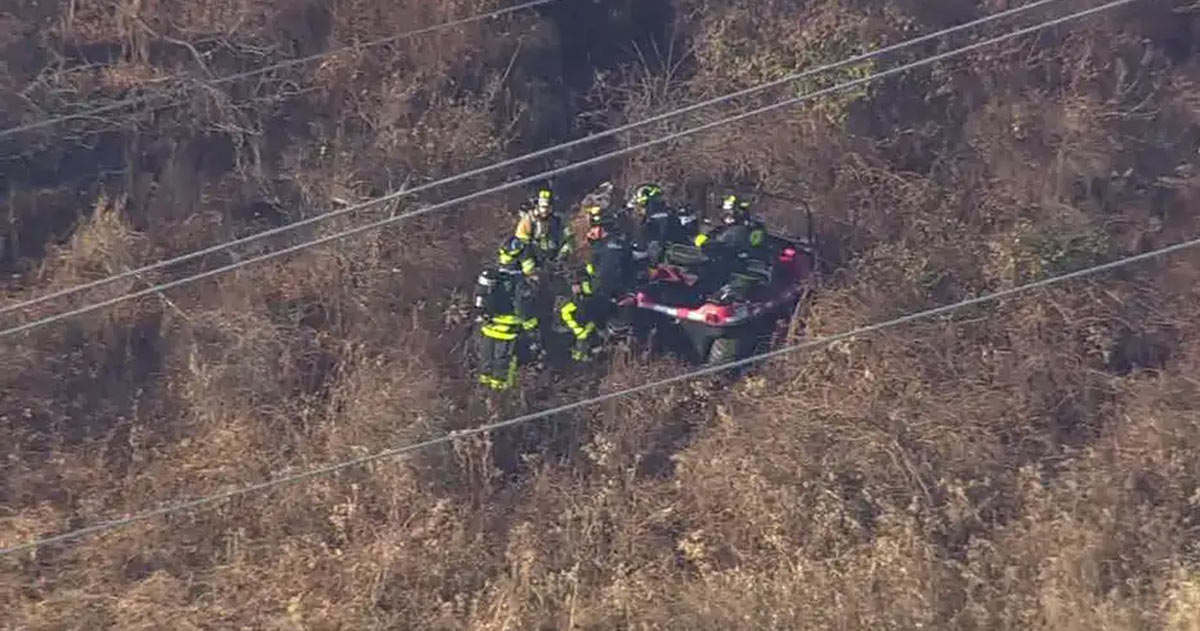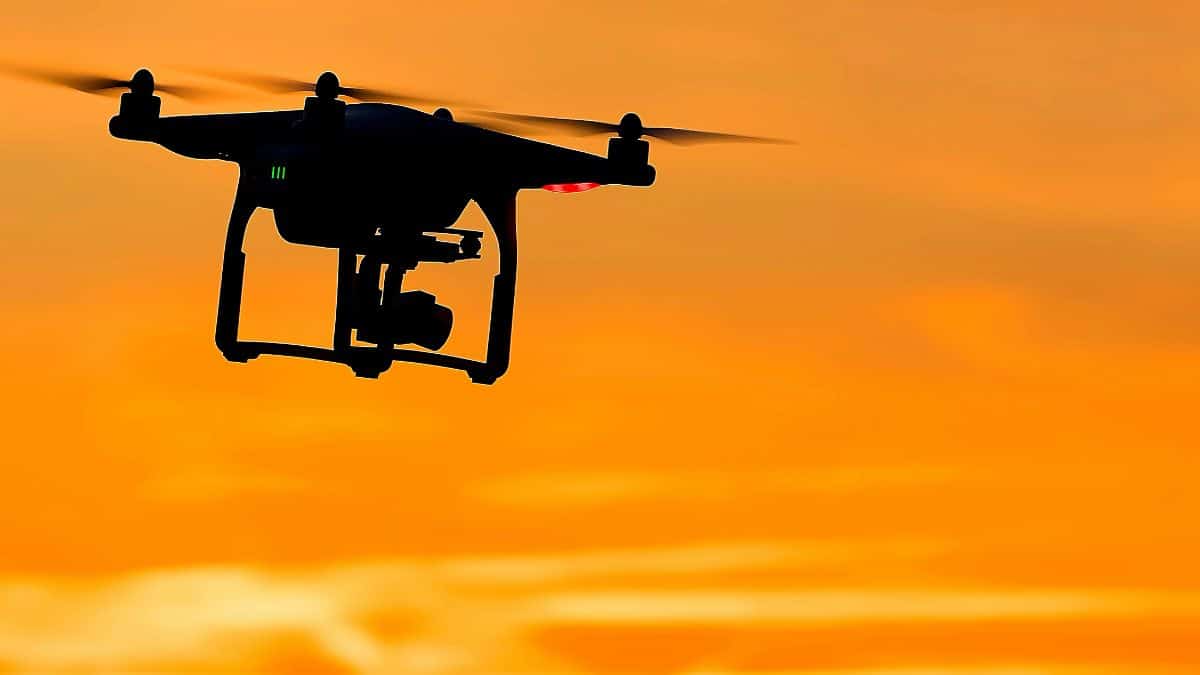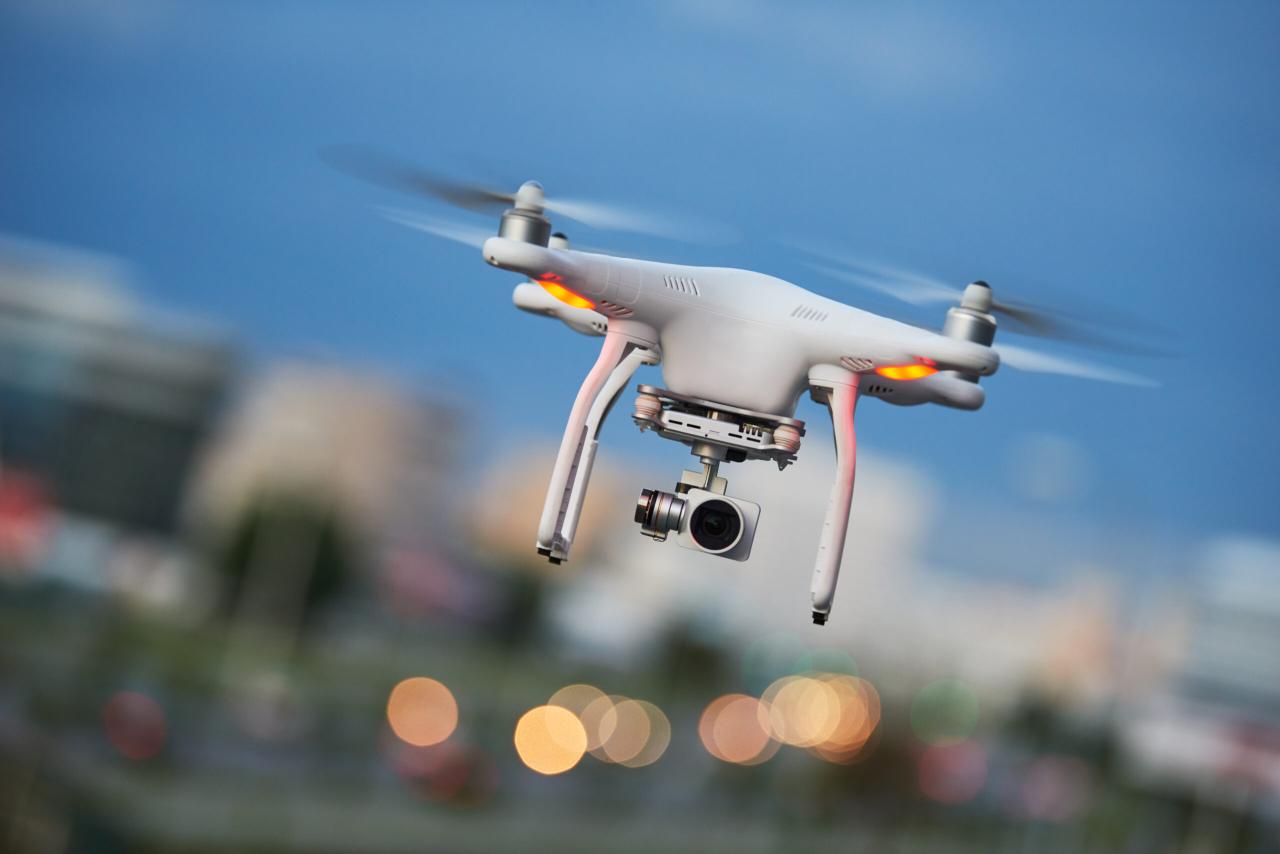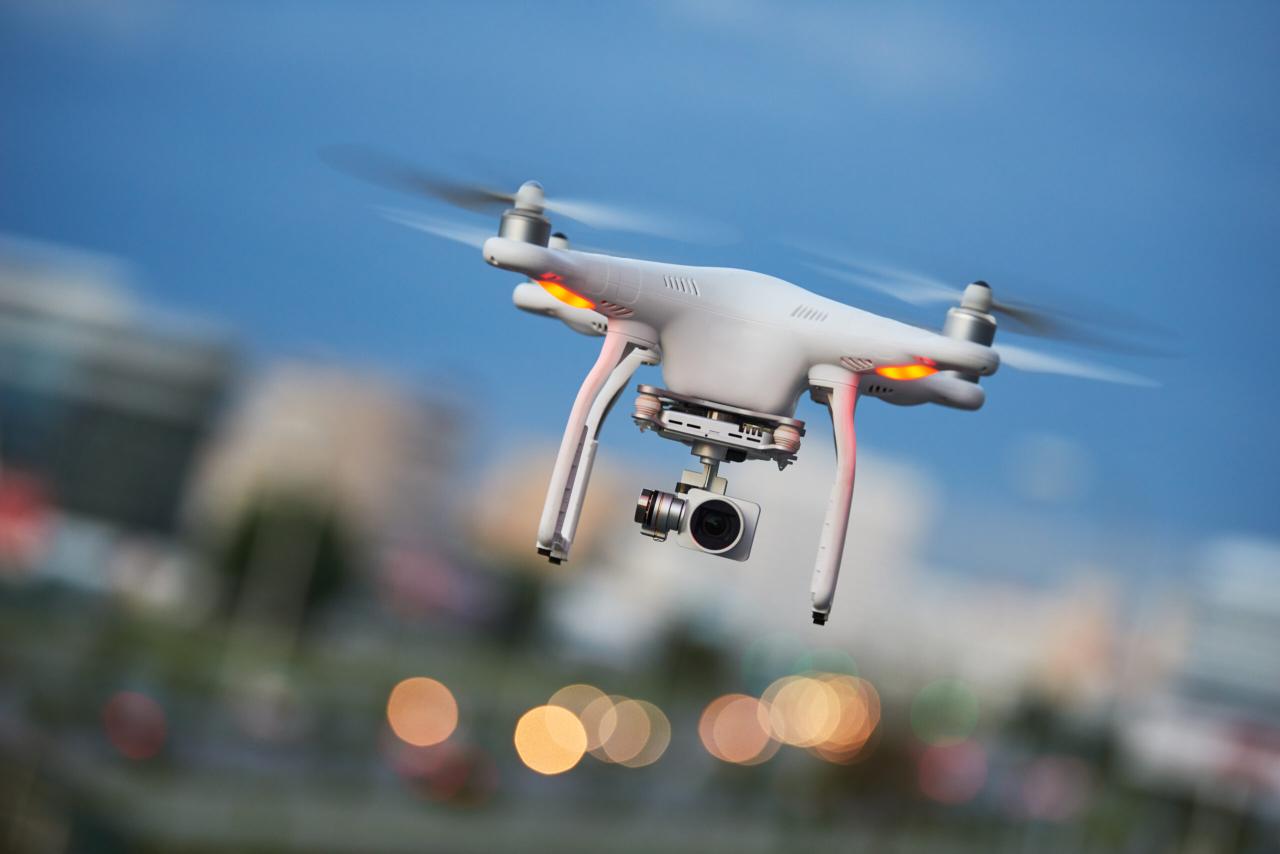Drone crash: These two words can instantly conjure images of damaged property, potential injuries, and frustrating investigations. But understanding the reasons behind drone crashes—from mechanical failures to pilot error—is crucial for preventing them. This guide delves into the various aspects of drone crashes, exploring causes, prevention strategies, the impact of accidents, investigation techniques, and future mitigation technologies. We’ll cover everything from pre-flight checklists to advanced AI-powered safety systems, providing a comprehensive overview for both novice and experienced drone pilots.
We’ll examine common mechanical issues, the effects of weather, and the significant role human error plays in accidents. We’ll also look at the legal ramifications and insurance implications following a crash, as well as the environmental considerations. This isn’t just about fixing a broken drone; it’s about understanding how to fly safely and responsibly.
Drone Crash Causes
Understanding why drones crash is crucial for improving safety and preventing future incidents. Several factors contribute to drone accidents, ranging from mechanical malfunctions to human error and environmental conditions.
Mechanical Failures
Mechanical failures are a significant cause of drone crashes. These can include motor failures, propeller damage, or issues with the drone’s electronic speed controllers (ESCs). Wear and tear, manufacturing defects, and impacts during flight can all lead to these failures. Regular maintenance and inspections are key to mitigating these risks.
Adverse Weather Conditions
Strong winds, heavy rain, snow, or extreme temperatures can severely impact drone stability and flight performance. High winds can easily push a drone off course or cause it to lose control, while rain or snow can affect the drone’s sensors and electronics. Pilots should always check weather forecasts before flying and avoid flying in adverse conditions.
Human Error
Human error is often a major contributing factor in drone accidents. Inadequate pilot training, insufficient pre-flight checks, and poor decision-making during flight can all lead to crashes. For example, neglecting to check battery levels before takeoff or failing to account for wind conditions can have serious consequences. Proper training and adherence to safety protocols are vital.
Drone Model and Brand Crash Rates
While specific crash rate data for individual drone models and brands is not consistently tracked publicly, anecdotal evidence and user reports suggest that some models are more prone to certain types of failures than others. Factors like design, component quality, and software can influence a drone’s reliability. Thorough research and reviews before purchasing a drone are advisable.
Software Glitches and Firmware Issues
Software bugs and outdated firmware can lead to unexpected drone behavior and crashes. These issues can manifest in various ways, from loss of control to erratic flight patterns. Keeping the drone’s firmware updated to the latest version is essential for maintaining optimal performance and minimizing software-related crashes.
Drone Crash Prevention Strategies
Implementing effective prevention strategies is key to reducing the risk of drone crashes. A combination of careful planning, proper maintenance, and safe operating practices is crucial.
Pre-Flight Checklist
A comprehensive pre-flight checklist should be followed before every flight. This checklist should include: verifying battery levels, checking propeller condition, inspecting the drone for any damage, confirming GPS signal strength, reviewing weather conditions, and planning the flight path. A well-structured checklist minimizes the likelihood of overlooking critical steps.
Best Practices for Drone Operation
- Urban Environments: Maintain awareness of surrounding buildings, obstacles, and airspace restrictions. Fly at lower altitudes and speeds in densely populated areas.
- Rural Environments: Be mindful of potential hazards like power lines, trees, and animals. Maintain visual line of sight whenever possible.
- Mountainous Environments: Account for strong winds and unpredictable air currents. Consider using higher-quality GPS and avoid flying in challenging terrain.
Drone Maintenance and Inspections
Regular maintenance and inspections are crucial for preventing mechanical failures. This includes checking for loose screws, damaged components, and ensuring proper battery health. A schedule for regular maintenance should be established and followed diligently.
Selecting Appropriate Flight Parameters
Choosing the correct flight parameters is crucial for safe operation. Factors like altitude, speed, and distance should be adjusted based on environmental conditions and the drone’s capabilities. For instance, reducing speed and altitude in windy conditions enhances stability and control.
Emergency Landing Procedures and Fail-Safes
Knowing how to execute emergency landing procedures and understanding the drone’s fail-safe mechanisms is essential. This includes understanding Return-to-Home (RTH) functionality and practicing emergency landings in a safe environment.
Impact of Drone Crashes
The consequences of drone crashes can be significant, affecting property, people, and the environment. Understanding these impacts is crucial for promoting responsible drone operation.
Property Damage
Drone crashes can cause substantial property damage, depending on the drone’s size, weight, and the location of the impact. Damage could range from minor scratches to significant structural damage to buildings or vehicles.
Injuries and Fatalities
While less common, drone crashes can result in injuries or fatalities. Falling drones, especially larger models, can cause serious harm if they strike a person. Safety guidelines and responsible operation are crucial to minimizing this risk.
Legal and Regulatory Implications
Drone crashes can trigger legal and regulatory consequences. Depending on the severity of the incident, pilots may face fines, license suspension, or even criminal charges. Understanding and adhering to all applicable laws and regulations is crucial.
Insurance Coverage
Drone insurance is vital to cover potential liabilities and damages associated with drone accidents. Various insurance options are available, offering different levels of coverage for property damage, third-party liability, and even hull damage to the drone itself.
Environmental Consequences

Drone crashes can have negative environmental consequences, particularly if the drone’s battery or components contain hazardous materials. Pollution from battery leakage or damage to sensitive ecosystems can occur.
Drone crashes can be a bummer, especially when you’ve invested in some serious tech. To avoid a costly mishap, make sure you’re up-to-date on regulations and best practices. For reliable and often-updated information on DJI drones, check out the resources available at dji drone canada which helps you understand the rules and best practices to prevent drone crashes.
Drone Crash Investigation and Analysis
Investigating drone crashes involves a systematic approach to determine the cause of the accident and prevent future occurrences. Gathering data and analyzing flight records are key steps.
Steps in a Drone Crash Investigation
- Secure the crash site and collect evidence.
- Examine the drone for damage and malfunctioning components.
- Retrieve flight data from the drone’s flight recorder (if available).
- Interview witnesses and gather information about the circumstances surrounding the crash.
- Analyze the collected data and determine the probable cause of the crash.
Key Data Points from Flight Recorder, Drone crash
Flight recorders (if present) provide valuable data, including GPS coordinates, altitude, speed, battery voltage, and sensor readings. This data helps reconstruct the flight path and identify potential contributing factors to the crash.
Reconstructing Flight Path and Identifying Cause
By combining data from the flight recorder, witness accounts, and physical examination of the drone, investigators can reconstruct the flight path and identify the most likely cause of the crash. This process often involves analyzing flight patterns, sensor readings, and environmental factors.
Data Sources in Drone Crash Investigations

| Data Source | Type of Information | Reliability | Limitations |
|---|---|---|---|
| Flight Recorder | Flight parameters, sensor data | High (if functioning correctly) | Data loss possible due to damage |
| Witness Testimony | Visual observations, context | Variable | Subjective, potential for inaccuracies |
| Drone Examination | Physical damage, component failure | High | May not reveal root cause |
| Weather Data | Wind speed, precipitation | High | Limited spatial resolution |
Role of Expert Witnesses
Expert witnesses, such as drone engineers or aviation accident investigators, play a crucial role in determining the cause of a drone crash. Their expertise helps analyze complex data, interpret technical information, and provide credible opinions to support legal proceedings or safety recommendations.
Drone Crash Mitigation Technologies
Technological advancements are continuously improving drone safety and reducing the risk of crashes. Several innovative technologies are emerging to enhance drone reliability and prevent accidents.
GPS-Based Fail-Safe Systems
GPS-based fail-safe systems, such as Return-to-Home (RTH) functionality, are essential for preventing crashes. If the drone loses signal or encounters a problem, the RTH function automatically guides it back to its starting point.
Obstacle Avoidance Sensors
Obstacle avoidance sensors, such as ultrasonic, infrared, and lidar sensors, help drones detect and avoid obstacles during flight. These sensors enhance situational awareness and reduce the risk of collisions with trees, buildings, or other objects.
Advanced Autonomous Flight Control Systems
Advanced autonomous flight control systems use sophisticated algorithms to manage flight stability and responsiveness. These systems can compensate for unexpected disturbances and help maintain stable flight even in challenging conditions.
Drone crashes can be frustrating, especially if you suspect interference is to blame. A common culprit? Wifi signal conflicts. To rule this out, quickly check which frequency your iPhone is using by following these simple steps: how to check your wifi ghz on iphone. Knowing if you’re on 2.4GHz or 5GHz can help you troubleshoot your drone’s connection problems and prevent future crashes.
Understanding your wifi setup is a crucial part of responsible drone operation.
Artificial Intelligence in Crash Prevention

Artificial intelligence (AI) is showing promise in predicting and preventing drone crashes. AI algorithms can analyze vast amounts of data to identify potential risks, predict failures, and suggest preventive measures. For example, AI could analyze sensor data to predict potential collisions before they occur.
Drone crashes can be a bummer, especially if you’re not following the rules. To avoid a costly mishap, make sure you’re up to speed on the regulations. Check out this handy guide on canada drone laws under 250g to understand weight limits and other important safety aspects. Knowing the rules can save your drone – and maybe even your bacon!
Conceptual Illustration of a Future Drone
Imagine a drone with a sleek, aerodynamic design. Its body is constructed from lightweight yet highly durable carbon fiber, reinforced with impact-absorbing materials. Multiple redundant sensors—including lidar, ultrasonic, and visual cameras—surround the drone, providing 360-degree obstacle avoidance. Advanced AI algorithms process sensor data in real-time, predicting potential hazards and adjusting flight parameters autonomously. The drone incorporates a sophisticated fail-safe system with multiple backup batteries and a robust communication link, ensuring safe operation even in challenging conditions.
The drone’s flight controller utilizes machine learning to continuously adapt to changing environments and improve its decision-making capabilities, making it exceptionally resilient to unforeseen events.
Summary
Ultimately, preventing drone crashes requires a multi-faceted approach. Regular maintenance, thorough pre-flight checks, adherence to best practices, and a keen awareness of environmental conditions are paramount. As technology advances, we can expect even more sophisticated safety features to emerge, further reducing the risk of accidents. However, responsible piloting remains the cornerstone of safe drone operation. By understanding the causes and consequences of drone crashes, we can collectively work towards a safer airspace for everyone.
Answers to Common Questions
What should I do immediately after a drone crash?
Ensure your safety and the safety of others. Assess the damage and any injuries. Contact relevant authorities if necessary (e.g., police, FAA). Do not attempt to tamper with the drone until an investigation is complete.
How much does drone insurance cost?
Costs vary widely depending on coverage, drone value, and your location. Shop around and compare policies from different providers.
Are there specific regulations for drone crashes I need to be aware of?
Yes, regulations vary by country and region. You are generally required to report serious accidents to the relevant aviation authority. Consult your local aviation regulations for specifics.
Can I repair my drone myself after a crash?
Minor repairs are sometimes possible, but for significant damage, it’s often best to seek professional repair services or consider replacement. Improper repairs could compromise the drone’s safety.
